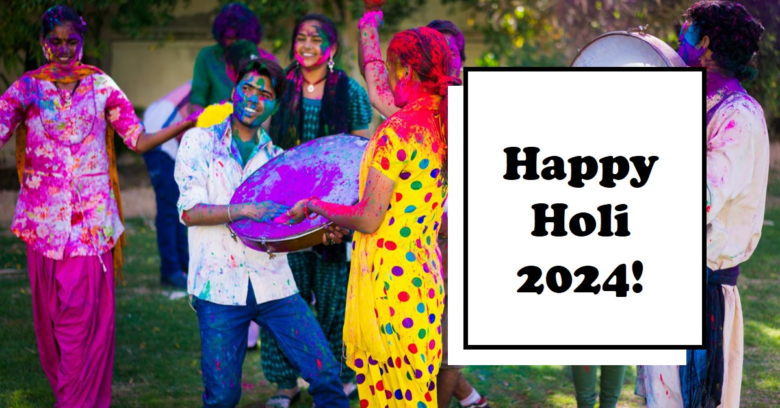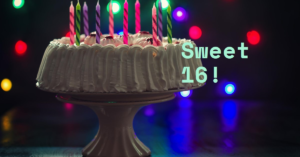Introduction
Holi, often referred to as the Festival of Colors, is one of the most vibrant and joyous celebrations in India. It’s a time when people come together to celebrate the triumph of good over evil, the arrival of spring, and the renewal of life. The festival is marked by the playful throwing of colored powders, singing, dancing, and an overall sense of communal harmony. Holi 2024 promises to be an extraordinary celebration, and in this article, we’ll delve into its history, traditions, and how you can make the most of this beautiful festival.
History and Origin of Holi
The roots of Holi are steeped in ancient mythology and history. The most famous legend associated with Holi is that of Prahlad and Holika. According to the myth, Prahlad was a devout follower of Lord Vishnu, which angered his demon king father, Hiranyakashipu. To punish Prahlad, Hiranyakashipu’s sister, Holika, who was immune to fire, tricked Prahlad into sitting on a pyre with her. However, her immunity failed, and she perished while Prahlad emerged unscathed, symbolizing the victory of good over evil. This event is commemorated with the Holika Dahan, a bonfire held the night before Holi.
When is Holi 2024?
Holi in 2024 will be celebrated on March 25th. The festival typically falls on the full moon day in the Hindu month of Phalguna, which usually falls in March. The exact date can vary each year based on the lunar calendar. The timing of Holi is significant as it marks the end of winter and the arrival of spring, symbolizing the rejuvenation of nature and the onset of new beginnings.
Preparations for Holi
Preparation for Holi begins days in advance. Homes are cleaned and decorated, and people shop for colors, water guns, and traditional attire. Markets are abuzz with vibrant gulal (colored powders), pichkaris (water guns), and delicious sweets. Families also prepare special dishes and sweets, which are an integral part of the festivities.
Holi Rituals and Traditions
Holika Dahan
The festivities kick off with Holika Dahan, which is celebrated on the eve of Holi. Communities gather to light bonfires, symbolizing the burning away of evil spirits. People sing and dance around the fire, offering prayers for prosperity and happiness.
Playing with Colors
The main event of Holi is the playing with colors, which takes place the following day. Friends and family members gather to smear each other with gulal and spray colored water. The air is filled with laughter, music, and a riot of colors. It’s a time when social boundaries are blurred, and everyone comes together in a spirit of joy and camaraderie.
Traditional Holi Songs and Dances
Music and dance are integral to Holi celebrations. Traditional folk songs, known as ‘Holi Geet,’ are sung, and people dance to the rhythms of drums and other musical instruments. These songs and dances are not only entertaining but also help to keep the cultural heritage alive.
Holi in Different Regions of India
Holi in North India
In North India, Holi is celebrated with great fervor and enthusiasm. Mathura and Vrindavan, associated with Lord Krishna, are particularly famous for their grand Holi celebrations. The festivities here can last for over a week, attracting tourists from all over the world.
Holi in South India
While Holi is not as widely celebrated in South India as in the North, it still holds cultural significance. In some parts, it is known as Kamadahana, marking the legend of Kamadeva, the god of love.
Holi in Western and Eastern India
In Western India, especially in Maharashtra and Gujarat, Holi is marked by the dahi handi tradition, where human pyramids attempt to break a pot filled with curd. In Eastern India, particularly in West Bengal, Holi coincides with the festival of Basanta Utsav, introduced by the poet Rabindranath Tagore, and is celebrated with songs, dances, and vibrant colors.
Cultural Significance of Holi
Holi is much more than just a festival of colors. It symbolizes social harmony, the victory of good over evil, and the arrival of spring. The festival fosters a sense of community, bringing people from different backgrounds together to celebrate life and renew relationships.
Modern Celebrations of Holi
In modern times, Holi has evolved into a global festival. Urban areas host Holi parties and events, featuring music, dance, and colors. The essence of Holi remains, but it has also adapted to contemporary tastes, becoming a celebration of joy and togetherness.
Holi Around the World
Holi’s appeal has transcended Indian borders, with celebrations taking place in various parts of the world.
Holi in the United States
In the United States, Holi is celebrated in many cities with large Indian communities. Public parks and community centers host Holi events, attracting people of all backgrounds to join in the fun.
Holi in Europe
Europe, too, has embraced Holi with open arms. Cities like London, Berlin, and Paris see large-scale Holi celebrations, complete with colors, music, and dancing. These events often attract locals and tourists alike, promoting cultural exchange and understanding.
Holi in Other Parts of the World
Holi is also celebrated in countries like Australia, Canada, and South Africa. These celebrations often include traditional Indian music, dance performances, and, of course, the playful throwing of colors.
Holi Food and Sweets
No festival in India is complete without delicious food, and Holi is no exception. Some traditional Holi delicacies include:
- Gujiya: A sweet dumpling filled with khoya and dry fruits.
- Thandai: A refreshing drink made with milk, nuts, and spices.
- Malpua: A syrupy pancake served with rabri.
- Puran Poli: A sweet flatbread stuffed with a mixture of jaggery and lentils.
These treats not only add to the festive spirit but also bring families together as they cook and share meals.
Safety Tips for Holi
While Holi is all about fun, it’s important to celebrate safely.
Playing with Safe Colors
Use natural or herbal colors to avoid skin allergies and other health issues. Chemical-based colors can be harmful, so it’s best to stick to eco-friendly options.
Protecting Skin and Hair
Apply a good amount of oil or moisturizer to your skin and hair before playing with colors. This helps in protecting against damage and makes it easier to wash off the colors later.
Environmental Considerations
Avoid wasting water and be mindful of the environment. Try to use dry colors and celebrate responsibly to minimize the ecological impact.
Holi and Bollywood
Bollywood has played a significant role in popularizing Holi through its movies. Famous Holi songs like “Rang Barse” and “Balam Pichkari” have become anthems of the festival. Iconic Holi scenes in movies depict the joy and exuberance of the celebrations, influencing how the festival is perceived both in India and abroad.
Eco-Friendly Holi
With growing environmental awareness, many.
Also visit:



